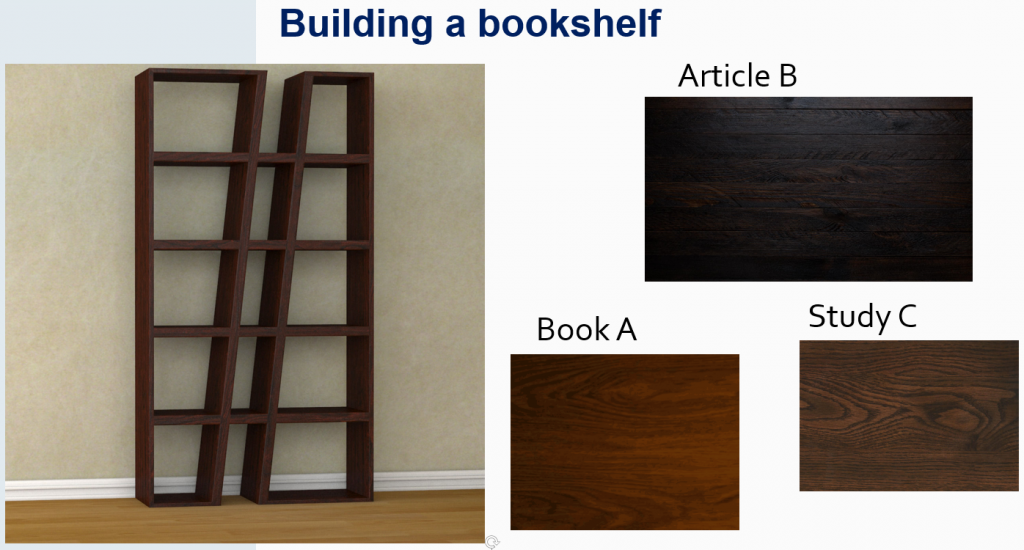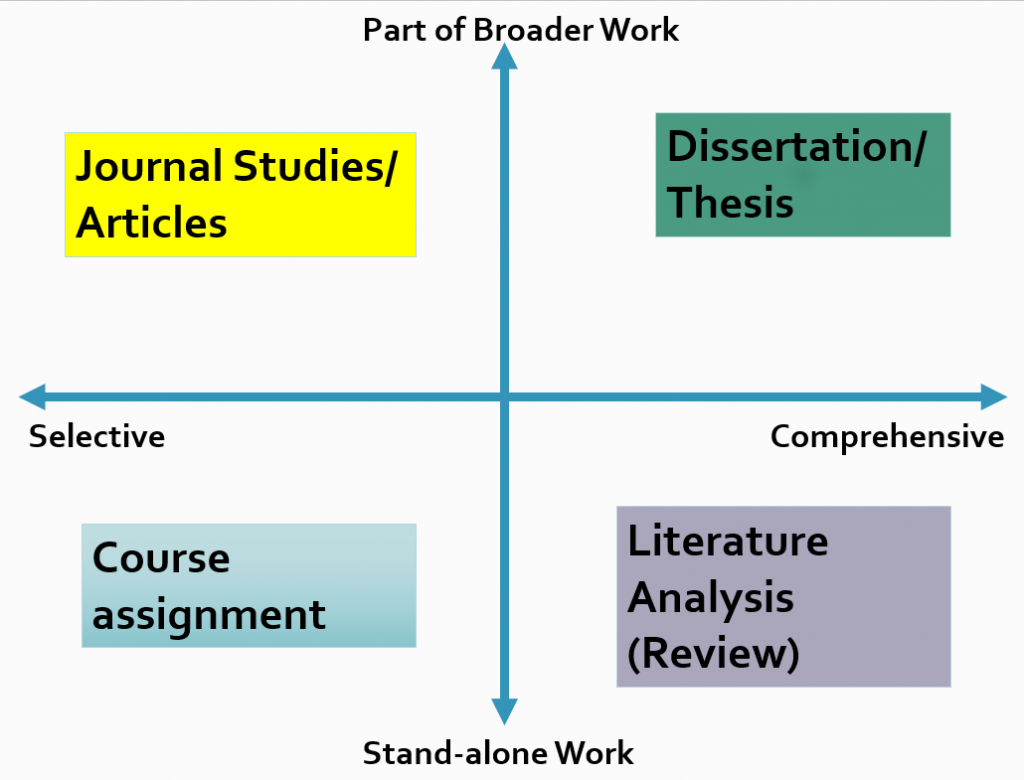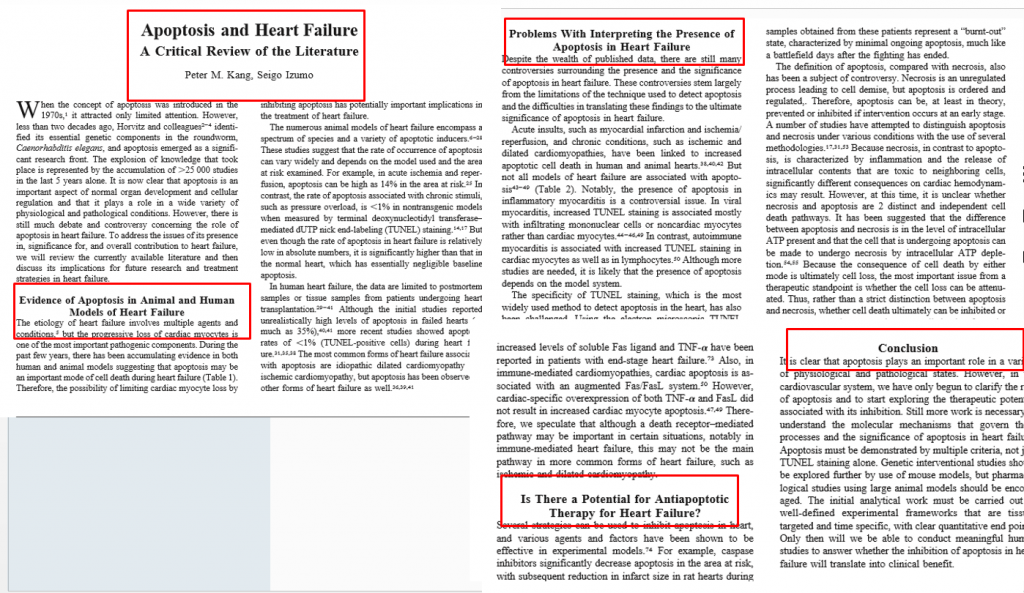What is an RRL in a research paper?
A relevant review of the literature (RRL) is an objective, concise, critical summary of published research literature relevant to a topic being researched in an article. In an RRL, you discuss knowledge and findings from existing literature relevant to your study topic. If there are conflicts or gaps in existing literature, you can also discuss these in your review, as well as how you will confront these missing elements or resolve these issues in your study.
To complete an RRL, you first need to collect relevant literature; this can include online and offline sources. Save all of your applicable resources as you will need to include them in your paper. When looking through these sources, take notes and identify concepts of each source to describe in the review of the literature.
A good RRL does NOT:
A literature review does not simply reference and list all of the material you have cited in your paper.
- Presenting material that is not directly relevant to your study will distract and frustrate the reader and make them lose sight of the purpose of your study.
- Starting a literature review with “A number of scholars have studied the relationship between X and Y” and simply listing who has studied the topic and what each scholar concluded is not going to strengthen your paper.
A good RRL DOES:
- Present a brief typology that orders articles and books into groups to help readers focus on unresolved debates, inconsistencies, tensions, and new questions about a research topic.
- Summarize the most relevant and important aspects of the scientific literature related to your area of research
- Synthesize what has been done in this area of research and by whom, highlight what previous research indicates about a topic, and identify potential gaps and areas of disagreement in the field
- Give the reader an understanding of the background of the field and show which studies are important—and highlight errors in previous studies
How long is a review of the literature for a research paper?
The length of a review of the literature depends on its purpose and target readership and can vary significantly in scope and depth. In a dissertation, thesis, or standalone review of literature, it is usually a full chapter of the text (at least 20 pages). Whereas, a standard research article or school assignment literature review section could only be a few paragraphs in the Introduction section.
Building Your Literature Review Bookshelf
One way to conceive of a literature review is to think about writing it as you would build a bookshelf. You don’t need to cut each piece by yourself from scratch. Rather, you can take the pieces that other researchers have cut out and put them together to build a framework on which to hang your own “books”—that is, your own study methods, results, and conclusions.

What Makes a Good Literature Review?
The contents of a literature review (RRL) are determined by many factors, including its precise purpose in the article, the degree of consensus with a given theory or tension between competing theories, the length of the article, the number of previous studies existing in the given field, etc. The following are some of the most important elements that a literature review provides.
Historical background for your research
Analyze what has been written about your field of research to highlight what is new and significant in your study—or how the analysis itself contributes to the understanding of this field, even in a small way. Providing a historical background also demonstrates to other researchers and journal editors your competency in discussing theoretical concepts. You should also make sure to understand how to paraphrase scientific literature to avoid plagiarism in your work.
The current context of your research
Discuss central (or peripheral) questions, issues, and debates in the field. Because a field is constantly being updated by new work, you can show where your research fits into this context and explain developments and trends in research.
A discussion of relevant theories and concepts
Theories and concepts should provide the foundation for your research. For example, if you are researching the relationship between ecological environments and human populations, provide models and theories that focus on specific aspects of this connection to contextualize your study. If your study asks a question concerning sustainability, mention a theory or model that underpins this concept. If it concerns invasive species, choose material that is focused in this direction.
Definitions of relevant terminology
In the natural sciences, the meaning of terms is relatively straightforward and consistent. But if you present a term that is obscure or context-specific, you should define the meaning of the term in the Introduction section (if you are introducing a study) or in the summary of the literature being reviewed.
Description of related relevant research
Include a description of related research that shows how your work expands or challenges earlier studies or fills in gaps in previous work. You can use your literature review as evidence of what works, what doesn’t, and what is missing in the field.
Supporting evidence for a practical problem or issue your research is addressing that demonstrates its importance: Referencing related research establishes your area of research as reputable and shows you are building upon previous work that other researchers have deemed significant.
Types of Literature Reviews
Literature reviews can differ in structure, length, amount, and breadth of content included. They can range from selective (a very narrow area of research or only a single work) to comprehensive (a larger amount or range of works). They can also be part of a larger work or stand on their own.

- A course assignment is an example of a selective, stand-alone work. It focuses on a small segment of the literature on a topic and makes up an entire work on its own.
- The literature review in a dissertation or thesis is both comprehensive and helps make up a larger work.
- A majority of journal articles start with a selective literature review to provide context for the research reported in the study; such a literature review is usually included in the Introduction section (but it can also follow the presentation of the results in the Discussion section).
- Some literature reviews are both comprehensive and stand as a separate work—in this case, the entire article analyzes the literature on a given topic.
Literature Reviews Found in Academic Journals
The two types of literature reviews commonly found in journals are those introducing research articles (studies and surveys) and stand-alone literature analyses. They can differ in their scope, length, and specific purpose.
Literature reviews introducing research articles
The literature review found at the beginning of a journal article is used to introduce research related to the specific study and is found in the Introduction section, usually near the end. It is shorter than a stand-alone review because it must be limited to very specific studies and theories that are directly relevant to the current study. Its purpose is to set research precedence and provide support for the study’s theory, methods, results, and/or conclusions. Not all research articles contain an explicit review of the literature, but most do, whether it is a discrete section or indistinguishable from the rest of the Introduction.
How to structure a literature review for an article
When writing a literature review as part of an introduction to a study, simply follow the structure of the Introduction and move from the general to the specific—presenting the broadest background information about a topic first and then moving to specific studies that support your rationale, finally leading to your hypothesis statement. Such a literature review is often indistinguishable from the Introduction itself—the literature is INTRODUCING the background and defining the gaps your study aims to fill.
The stand-alone literature review
The literature review published as a stand-alone article presents and analyzes as many of the important publications in an area of study as possible to provide background information and context for a current area of research or a study. Stand-alone reviews are an excellent resource for researchers when they are first searching for the most relevant information on an area of study.
Such literature reviews are generally a bit broader in scope and can extend further back in time. This means that sometimes a scientific literature review can be highly theoretical, in addition to focusing on specific methods and outcomes of previous studies. In addition, all sections of such a “review article” refer to existing literature rather than describing the results of the authors’ own study.
In addition, this type of literature review is usually much longer than the literature review introducing a study. At the end of the review follows a conclusion that once again explicitly ties all of the cited works together to show how this analysis is itself a contribution to the literature. While not absolutely necessary, such articles often include the terms “Literature Review” or “Review of the Literature” in the title. Whether or not that is necessary or appropriate can also depend on the specific author instructions of the target journal. Have a look at this article for more input on how to compile a stand-alone review article that is insightful and helpful for other researchers in your field.

How to Write a Literature Review in 6 Steps
So how do authors turn a network of articles into a coherent review of relevant literature?
Writing a literature review is not usually a linear process—authors often go back and check the literature while reformulating their ideas or making adjustments to their study. Sometimes new findings are published before a study is completed and need to be incorporated into the current work. This also means you will not be writing the literature review at any one time, but constantly working on it before, during, and after your study is complete.
Here are some steps that will help you begin and follow through on your literature review.
Step 1: Choose a topic to write about—focus on and explore this topic.
Choose a topic that you are familiar with and highly interested in analyzing; a topic your intended readers and researchers will find interesting and useful; and a topic that is current, well-established in the field, and about which there has been sufficient research conducted for a review. This will help you find the “sweet spot” for what to focus on.
Step 2: Research and collect all the scholarly information on the topic that might be pertinent to your study.
This includes scholarly articles, books, conventions, conferences, dissertations, and theses—these and any other academic work related to your area of study is called “the literature.”
Step 3: Analyze the network of information that extends or responds to the major works in your area; select the material that is most useful.
Use thought maps and charts to identify intersections in the research and to outline important categories; select the material that will be most useful to your review.
Step 4: Describe and summarize each article—provide the essential information of the article that pertains to your study.
Determine 2-3 important concepts (depending on the length of your article) that are discussed in the literature; take notes about all of the important aspects of this study relevant to the topic being reviewed.
For example, in a given study, perhaps some of the main concepts are X, Y, and Z. Note these concepts and then write a brief summary about how the article incorporates them. In reviews that introduce a study, these can be relatively short. In stand-alone reviews, there may be significantly more texts and more concepts.
Step 5: Demonstrate how these concepts in the literature relate to what you discovered in your study or how the literature connects the concepts or topics being discussed.
In a literature review intro for an article, this information might include a summary of the results or methods of previous studies that correspond to and/or confirm those sections in your own study. For a stand-alone literature review, this may mean highlighting the concepts in each article and showing how they strengthen a hypothesis or show a pattern.
Discuss unaddressed issues in previous studies. These studies that are missing something you address are important to include in your literature review. In addition, those works whose theories and conclusions directly support your findings will be valuable to review here.
Step 6: Identify relationships in the literature and develop and connect your own ideas to them.
This is essentially the same as step 5 but focused on the connections between the literature and the current study or guiding concepts or arguments of the paper, not only on the connections between the works themselves.
Your hypothesis, argument, or guiding concept is the “golden thread” that will ultimately tie the works together and provide readers with specific insights they didn’t have before reading your literature review. Make sure you know where to put the research question, hypothesis, or statement of the problem in your research paper so that you guide your readers logically and naturally from your introduction of earlier work and evidence to the conclusions you want them to draw from the bigger picture.
Your literature review will not only cover publications on your topics but will include your own ideas and contributions. By following these steps you will be telling the specific story that sets the background and shows the significance of your research and you can turn a network of related works into a focused review of the literature.
Literature Review (RRL) Examples
Because creating sample literature reviews would take too long and not properly capture the nuances and detailed information needed for a good review, we have included some links to different types of literature reviews below. You can find links to more literature reviews in these categories by visiting the TUS Library’s website.
Sample literature reviews as part of an article, dissertation, or thesis:
- Critical Thinking and Transferability: A Review of the Literature (Gwendolyn Reece)
- Building Customer Loyalty: A Customer Experience Based Approach in a Tourism Context (Martina Donnelly)
Sample stand-alone literature reviews
- Literature Review on Attitudes towards Disability (National Disability Authority)
- The Effects of Communication Styles on Marital Satisfaction (Hannah Yager)
Additional Literature Review Format Guidelines
In addition to the content guidelines above, authors also need to check which style guidelines to use (APA, Chicago, MLA, etc.) and what specific rules the target journal might have for how to structure such articles or how many studies to include—such information can usually be found on the journals’ “Guide for Authors” pages. Additionally, use one of the four Wordvice citation generators below, choosing the citation style needed for your paper:
- APA Citation Generator
- MLA Citation Generator
- Chicago Citation Generator
- Vancouver Citation Generator
Wordvice Writing and Academic Editing Resources
Finally, after you have finished drafting your literature review, be sure to receive professional proofreading services, including paper editing for your academic work. A competent proofreader who understands academic writing conventions and the specific style guides used by academic journals will ensure that your paper is ready for publication in your target journal.
See our academic resources for further advice on references in your paper, how to write an abstract, how to write a research paper title, how to impress the editor of your target journal with a perfect cover letter, and dozens of other research writing and publication topics.








